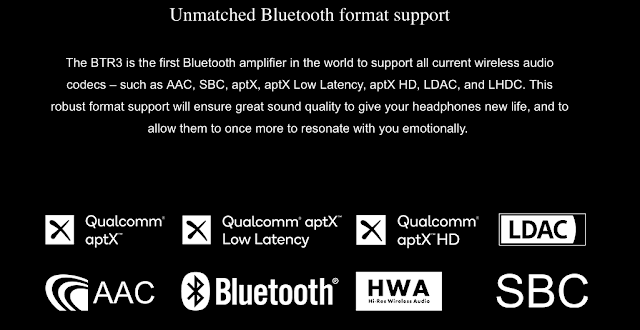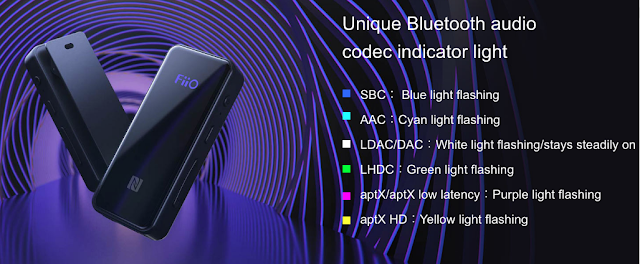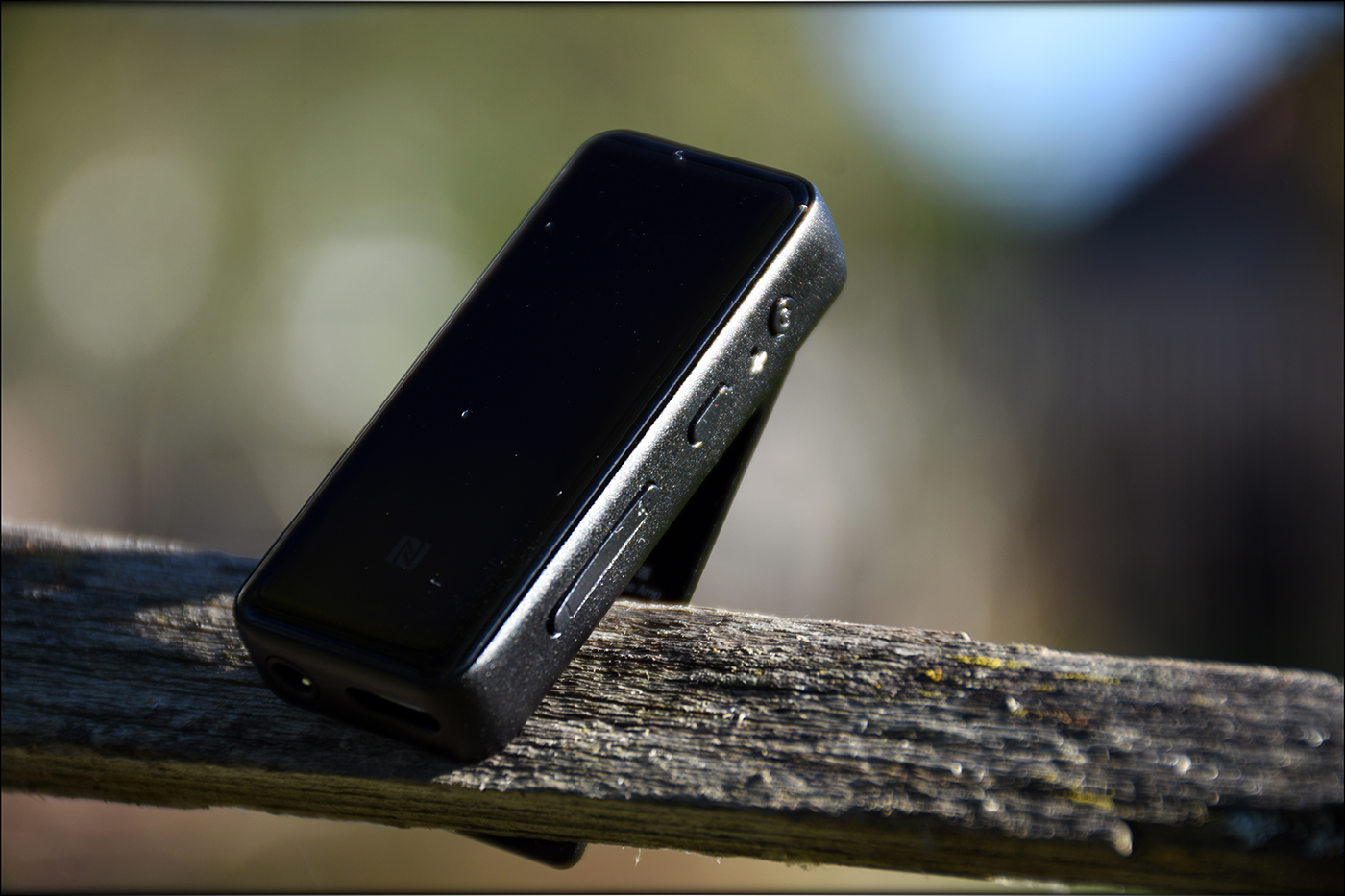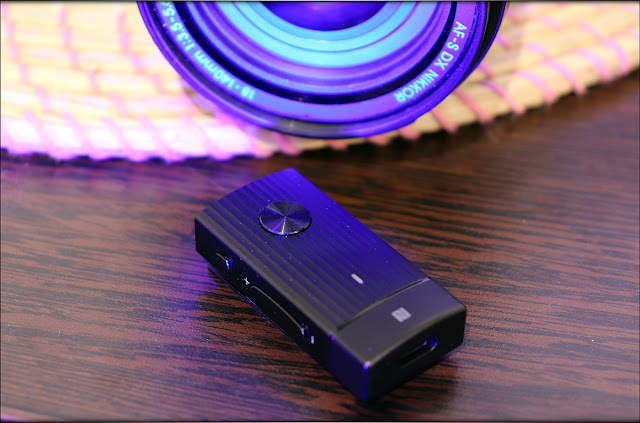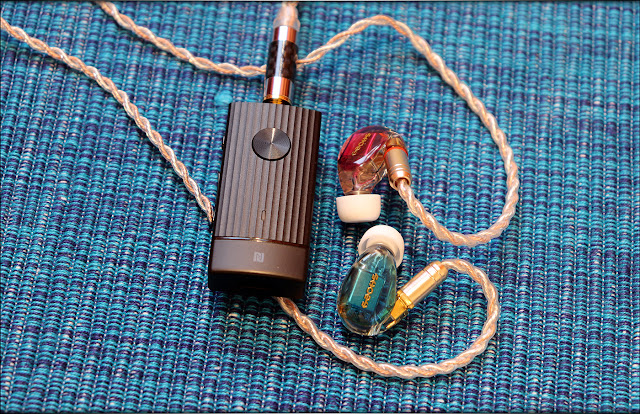The FiiO BTR3 Review
A Small & Wireless All-Rounder
Introduction:
The BTR3 is the latest member of FiiO’s Portable Bluetooth Receiver product line and has been announced at the KL International AV Show (KLIAV) in 20 July 2018.
The FiiO BTR3 is a small portable Hi-Res Bluetooth receiver with build in DAC (AK4376A) and Amplifier, which supports a wide variety of Bluetooth Audio Codec’s.
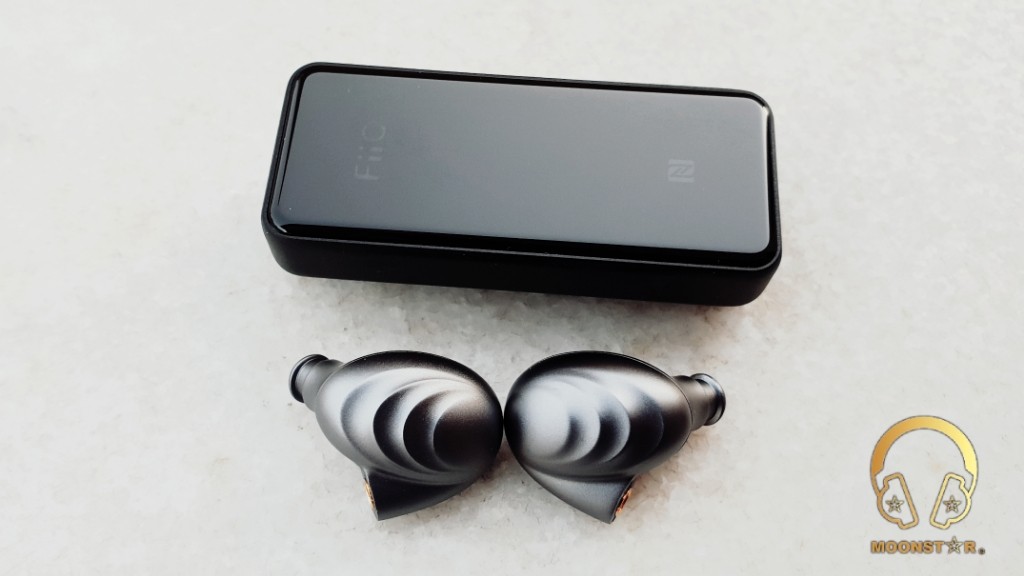
About me: www.moonstarreviews.net
Some Short information’s about FiiO:
FiiO is a Chinese HiFi brand that was established in 2007 and has experience in researching and developing countless portable music products of different types, and sell FiiO-branded products through sales agents worldwide. The brand name FiiO is composed of Fi (fidelity from HiFi) and iO (number 1&0), representing the real feeling and convenient life that digital brings to life.
Meanwhile, the Chinese “飞傲” is the transliteration of FiiO, indicating the positive and innovative spirit as thriving as spring.
Disclaimer:
I would like to thank FiiO for providing me the FiiO BTR3 as review sample. I am not affiliated with FiiO beyond this review and these words reflect my true and unaltered, opinions about the product.
Price:
The MSRP price for the Fiio BTR3 is 69,99 USD under the following links;
Package and Accessories:
The device comes in a small white card-box that sports the product image on the top cover.
This box is containing the following items/accessories;
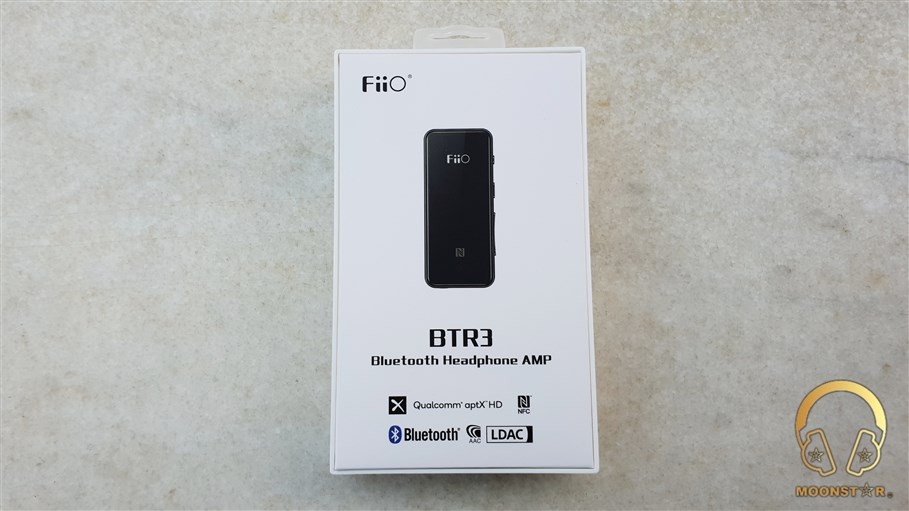

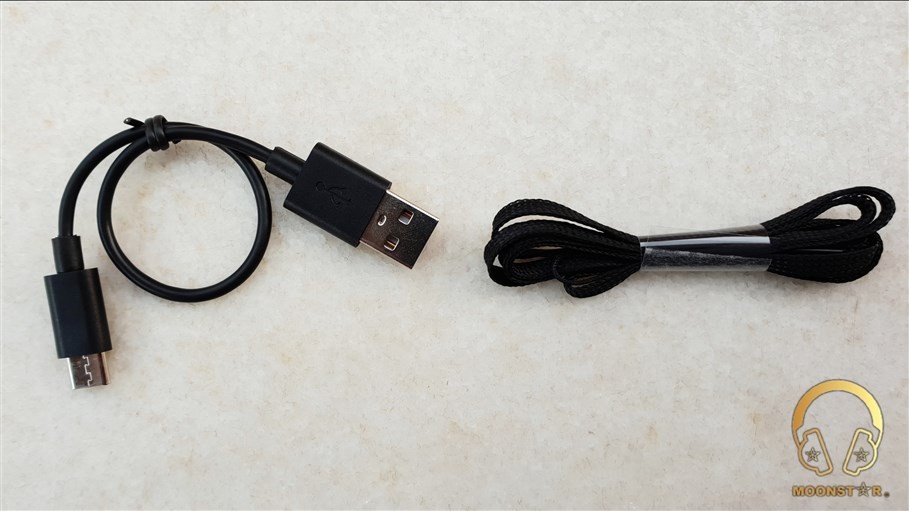
Design, Buttons and Build Quality:
The FiiO BTR3 is a small and lightweight device with a dimension of 58×25×10.4mm (exclusive back clip) and weight of 26g (inclusive battery) that has an aluminum body with a glass panel on the front.
On the front of the device is a black 2.5D glass panel, which has an oleophobic coating that keeps off fingerprints. This glass panel has a smooth texture and sports an NFC and the FiiO Logo. The FiiO logo has a build in RGB indicator light that lights up in various colors.
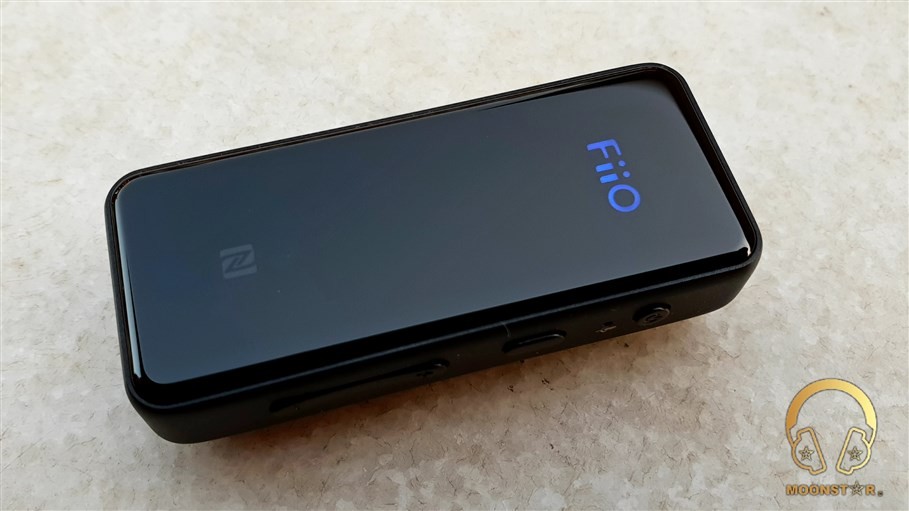
On the right side of the device are the power button, a microphone, a multi-functional button, and the volume "up/down button", which also operates as previous and next track button.

At the bottom of the device are the 3.5mm headphone jack (unbalanced TRS) and the USB Type C port, which serves as data, digital out and charging port
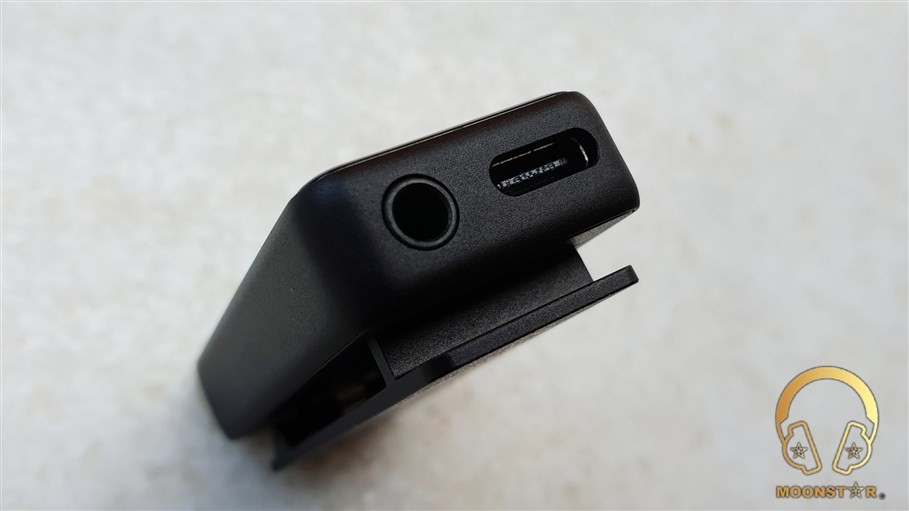
On the back side of the device is a shirt clip that sports the FiiO branding.
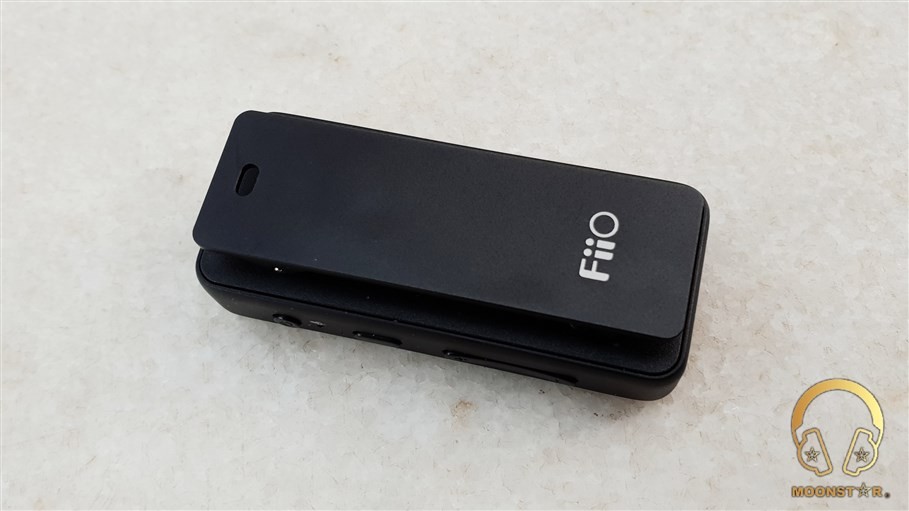
Specifications:
Hardware and Functionality:
The FiiO BTR3 sports a Qualcomm CR8675 Bluetooth Chip and an Asahi Kasei AK4376A DAC with build in amplifier.
a) Bluetooth Chip:
The Qualcomm CR8675 Bluetooth chip used in the BTR3 is a premium low-power solution designed for enhanced audio applications with support for 24-bit transmission and processing, thanks to its 120MHz DSP. This chip is also much more stable in signal strength than other competing chips, especially in situations with lots of interference.
b) DAC and AMP Section:
The AK4376A is a compact DAC with a build in headphone amplifier for portable audio products. It has some nice specs such as -107dB THD+N and signal to noise ratio (SNR) of 125dB.

c) Drivability:
The FiiO BTR3 has a power output of 33mW@16 Ohm & 25mW@32 Ohm, which makes it loud enough for IEM’s with an impedance between 8 to 60 Ohm (HiFiMAN RE800 Silver). The BTR3 was also able to drive my full sized headphone the very popular Audio-Technica ATH M50 to very loud volume levels.
d) Pairing:
The BTR3 can be paired to other compatible devices with just a simple tap using the NFC wireless short-range communication protocol, entirely avoiding the cumbersome traditional pairing process.
But if you want to pair the BTR3 in traditional ways, here is a short instruction for you;


e) USB DAC function:
The BTR3 adopts the Type-C connector, which is easier to use than older Micro USB connectors; this allows you to insert the cable in either way. The Fiio BTR3 supports also the USB DAC functionality without the need to install a driver, just simply plug and play!
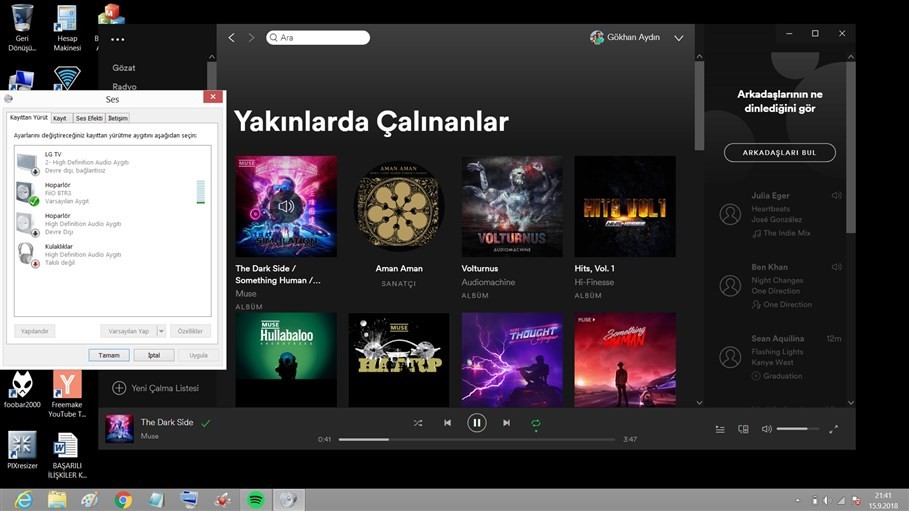
e) Battery Life:
The FiiO BTR3 sports a 300 mAh battery, which takes 1.5 hours to fully charge. According to FiiO should this battery last for nearly 11 Hours with a single charge by using the AAC codec.
My experience shows that the battery of the FiiO BTR3 is actually capable to last around 10 Hours, which is pretty good for such a small device.
f) Hissing:
The FiiO BTR3 shows a very low background noise with sensitive IEM’s, while most IEM’s including the FiiO FH5 and F9 Pro have had shown zero hissing.
Firmware Update:
The latest firmware for the BTR3 is v1.0 (v1030) at present. There is no need to upgrade your BTR3 again, if it is already latest firmware.
It will be displayed as version 1.0 on latest version FiiO Music app v1.0.4 after upgrading the BTR3 to firmware v1.0.
Note: please download and install the latest version FiiO Music app v1.0.4 firstly, if you want to know the version on your BTR3.
You can find the download link and update instruction under the link below;
https://www.fiio.com/newsinfo/84403.html?tdsourcetag=s_pctim_aiomsg
Supported Audio Formats:
The FiiO BTR3 supports almost any Bluetooth Audio codec such as AAC, SBC, aptX, aptX LL (Low Latency), aptX HD, LDAC and LHDC
The FiiO logo on the top of the device works as a codec indicator light and flash’s up in the following colors;
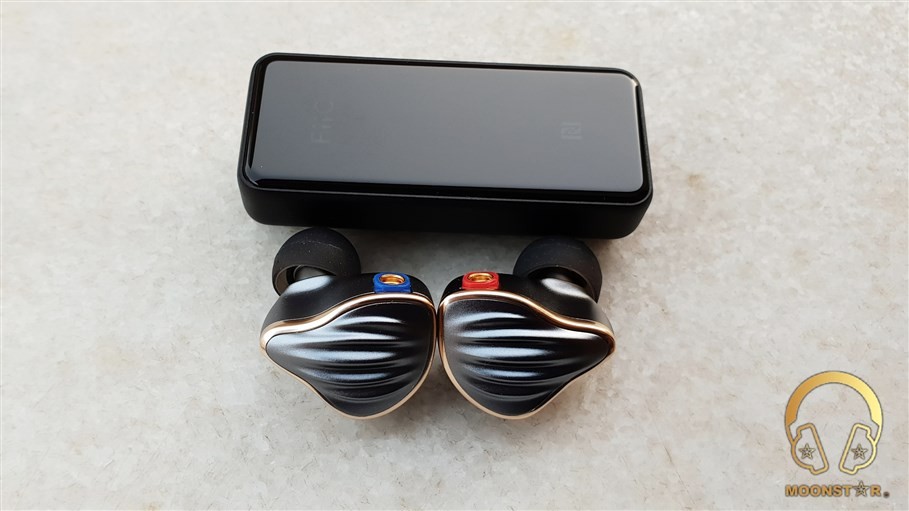
Equipment’s used for this review:
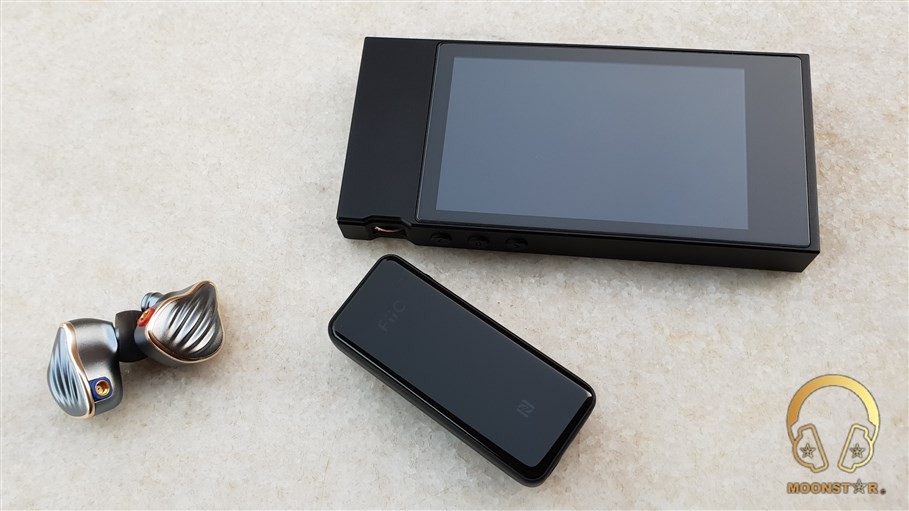
Albums & tracks used for this review:
The Sound:
The FiiO BTR3 is a wireless DAC/Amp that has a balanced and fairly neutral sound, which is neither warm nor cold in tonality.
The Bass:
The sub-bass region shows good depth and will be have enough rumble for most music genres, while it is missing slightly more extension, which is quite acceptable for a DAC/AMP at this price range.
The midbass area of the BTR3 is mildly emphasized, is pretty controlled and shows good midbass speed. Nice to hear that the bass of the BTR3 doesn’t shows any noticeable mixing, muddiness or mid-bass hump.
The speed of the bass while listening to fast drum kick in genres such as metal music is great at this price point and will satisfy many users who are looking for a source with a dynamic presentation.
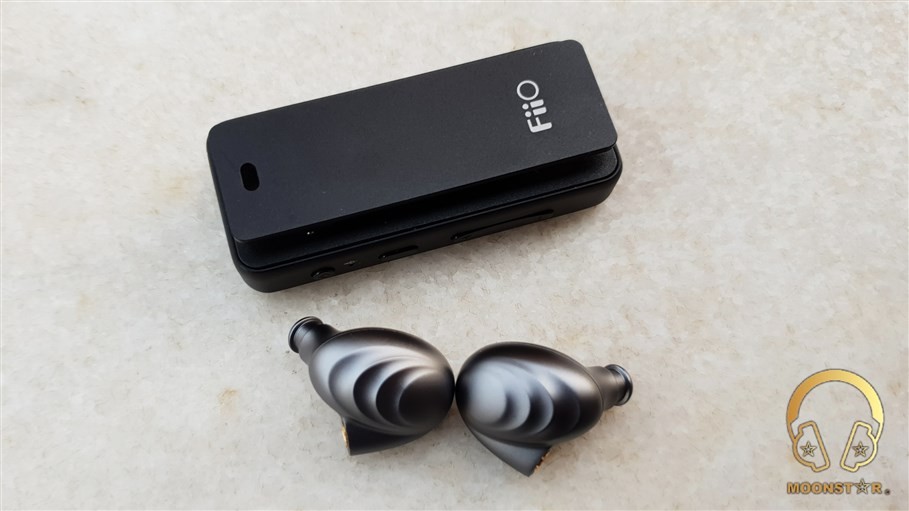
The Midrange:
The midrange of the FiiO BTR3 has a fairly neutral, transparent presentation, without any additional coloration such as warmth or the opposite.
Male vocals are sounding lively and clear, while the only thing that is missing is a little bit more body of the presentation. I wish that it could sound a little bit fuller and thicker, while i listen to vocals such as Dave Gahan or Eric Clapton.
When it comes to the female vocal performance of the BRT3, I can confirm that it sounds great at this price point, because presentation is transparent, airy, detailed and controlled. This makes the FiiO BRT3 to a great choice for those who give value of the performance of a source with female voices.
The tonality of the FiiO BTR3 is not thick or to thin that makes it to a pretty neutral source for listening to instrument. Instruments such as guitars or violins are slightly bright, have good extension and detail. Instruments like side flutes sounding fast, a touch brighter than in normal and exhilarated, while the overall presentation sounds clear and distinct, which makes the FiiO BTR3 to a quite competitive Bluetooth DAC/AMP solution.
One other good aspect of the BTR3 is the separation and positioning of instruments.
Upper Midrange and Treble:
The FiiO BTR3 has some crystalline, strong and fairly bright treble region, while the upper midrange is a bit on the sharper side of neutral is. But the transition between upper midrange and lower treble is well done and doesn’t sounds too harsh or ear piercing. Furthermore, the treble area sounds quite airy and spacious that could make the BRT3 to a good pairing with IEM's/Earphones that are a bit too hot in this region.
I have had no remarkable complains regarding to the extension, sharpness and treble emphasis, while listening to songs such as Chopin’s Nocturne, GoGo Penguin’s sharp jazz or to Megadeth’s Holy Wars with the very fast drum performance. I can say by the end, that the FiiO BRT3 shows a treble performance with a success wide over its price tag.
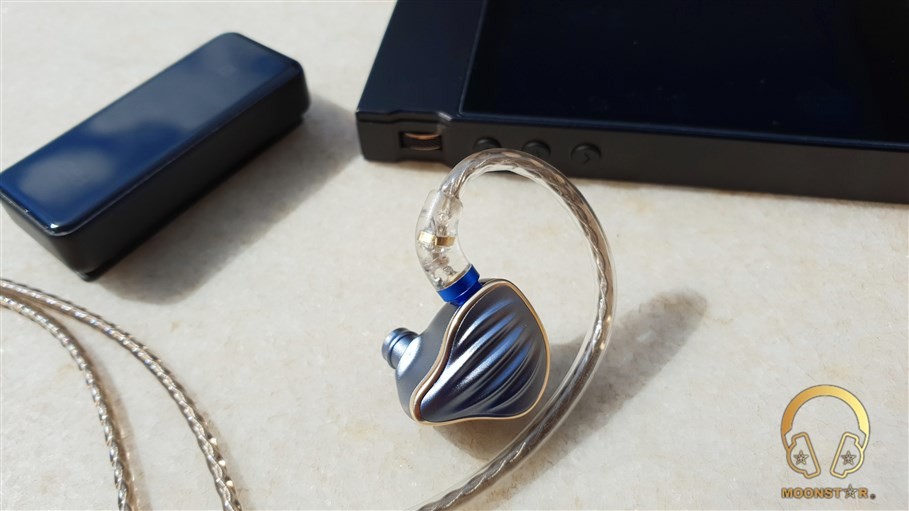
Soundstage:
The FiiO BTR3 has a soundstage and definition of instrument placement that can be considered as fairly good. The relatively neutral tonality and the fairly wide stage give the BTR3's overall presentation a breezy and spacious feel, while the depth shows a rather average performance.
Comparison:
FiiO BTR3 versus Astell&Kern XB10:
The Astell&Kern XB10 is a Bluetooth DAC/AMP with slightly warm tonality and V shaped sound signature, while the FiiO BTR3 is more neutral in with its tonality and shows a fairly straight frequency sequence.
The subbass area of the XB10 is superior to the BRT3 in terms of the quantity and depth and shows also the better extension. Both Bluetooth devices are pretty equal when it comes to the midbass performance, while the BTR3 has a faster and tighter bass character which is also superior to the XB10 in terms of control.
When it comes to the midrange the Astell&Kern XB10 is showing a noticeable recessed presentation due to the V shaped tuning, while the FiiO BRT3 is relative neutral and uncolored in this region with its more forward oriented midrange presentation.
The XB10 is the more successful source for male vocals due to the stronger lower midrange character, which makes male voices more realistic an enjoyable. But when it comes to the female vocal performance, the situation is changing, because the FiiO BTR3 sounds more realistic due to the transparent, clean and more pronounced upper midrange region. The Astell&Kern XB10 is missing the clearness and presence that the BRT3 has that makes it suitable for female vocals.
Both Bluetooth devices are quite successful in terms of the instrument detail. The Astell&Kern XB10 performs better with instruments, which need a thicker presentation, while the FiiO BTR3 is more suitable with instruments that have a thinner presentation.
The treble range of the Astell&Kern XB10 sounds thicker and musical, while the FiiO BTR3 is brighter and superior in terms of treble extensions.
Both devices have a stage that suitable for fairly precise instrument placement. The soundstage of the Astell&Kern XB10 is narrower compared to the FiiO BTR3, while the XB10 has slightly better depth than those of the BTR3.

Conclusion:
The FiiO BTR3 is a wireless Bluetooth Receiver that shows a clean and neutral sound presentation, which is packed in a small sized device with lots of features and wireless audio codec.
Pros and Cons:
A Small & Wireless All-Rounder
Introduction:
The BTR3 is the latest member of FiiO’s Portable Bluetooth Receiver product line and has been announced at the KL International AV Show (KLIAV) in 20 July 2018.
The FiiO BTR3 is a small portable Hi-Res Bluetooth receiver with build in DAC (AK4376A) and Amplifier, which supports a wide variety of Bluetooth Audio Codec’s.

About me: www.moonstarreviews.net
Some Short information’s about FiiO:
FiiO is a Chinese HiFi brand that was established in 2007 and has experience in researching and developing countless portable music products of different types, and sell FiiO-branded products through sales agents worldwide. The brand name FiiO is composed of Fi (fidelity from HiFi) and iO (number 1&0), representing the real feeling and convenient life that digital brings to life.
Meanwhile, the Chinese “飞傲” is the transliteration of FiiO, indicating the positive and innovative spirit as thriving as spring.
Disclaimer:
I would like to thank FiiO for providing me the FiiO BTR3 as review sample. I am not affiliated with FiiO beyond this review and these words reflect my true and unaltered, opinions about the product.
Price:
The MSRP price for the Fiio BTR3 is 69,99 USD under the following links;
Package and Accessories:
The device comes in a small white card-box that sports the product image on the top cover.
This box is containing the following items/accessories;
- 1 x FiiO BTR3 Portable Bluetooth Receiver & Amplifier
- 1 x USB mini to USB Type-C cable for data cable and charging
- 1 x Lanyard
- 1 x Quick Start Guide
- 1 x Warranty card



Design, Buttons and Build Quality:
The FiiO BTR3 is a small and lightweight device with a dimension of 58×25×10.4mm (exclusive back clip) and weight of 26g (inclusive battery) that has an aluminum body with a glass panel on the front.
On the front of the device is a black 2.5D glass panel, which has an oleophobic coating that keeps off fingerprints. This glass panel has a smooth texture and sports an NFC and the FiiO Logo. The FiiO logo has a build in RGB indicator light that lights up in various colors.

On the right side of the device are the power button, a microphone, a multi-functional button, and the volume "up/down button", which also operates as previous and next track button.

At the bottom of the device are the 3.5mm headphone jack (unbalanced TRS) and the USB Type C port, which serves as data, digital out and charging port

On the back side of the device is a shirt clip that sports the FiiO branding.

Specifications:
- Model : FiiO BTR3
- Audio Input : Bluetooth V4.2
- Supported Codec’s : AAC, SBC, aptX, aptX Low Latency, aptX HD, LDAC and LHDC
- Bluetooth chip : Qualcomm CR8675
- DAC : AK4376A
- AMP : onboard AMP Included in AK4376A
- Frequency Response : 20~20kHz(aptX connection), 20~40kHz(LDAC connection)
- THD+N : 0.003%(LHDC 1kHz)
- SNR : 120dB (A-weighted)
- Output : 3.5mm Single Ended
- Output Power : 33mW@16 Ohm & 25mW@32 Ohm
- Output Impedance : 0.3 Ω(32Ω loaded)
- Crosstalk : ≥ 75 dB(32Ω loaded)
- Drivability : 16~100 Ω (recommended)
- Battery : 300mAH
- Battery Life : about 11hours
- Charging Time : ≤1.5 h (DC 5V 500mA)
- USB Port : USB Type C
- Size : 58×25×10.4mm (exclusive of back clip)
- Weight : 26 g (incl. battery)
Hardware and Functionality:
The FiiO BTR3 sports a Qualcomm CR8675 Bluetooth Chip and an Asahi Kasei AK4376A DAC with build in amplifier.
a) Bluetooth Chip:
The Qualcomm CR8675 Bluetooth chip used in the BTR3 is a premium low-power solution designed for enhanced audio applications with support for 24-bit transmission and processing, thanks to its 120MHz DSP. This chip is also much more stable in signal strength than other competing chips, especially in situations with lots of interference.
b) DAC and AMP Section:
The AK4376A is a compact DAC with a build in headphone amplifier for portable audio products. It has some nice specs such as -107dB THD+N and signal to noise ratio (SNR) of 125dB.

c) Drivability:
The FiiO BTR3 has a power output of 33mW@16 Ohm & 25mW@32 Ohm, which makes it loud enough for IEM’s with an impedance between 8 to 60 Ohm (HiFiMAN RE800 Silver). The BTR3 was also able to drive my full sized headphone the very popular Audio-Technica ATH M50 to very loud volume levels.
d) Pairing:
The BTR3 can be paired to other compatible devices with just a simple tap using the NFC wireless short-range communication protocol, entirely avoiding the cumbersome traditional pairing process.
But if you want to pair the BTR3 in traditional ways, here is a short instruction for you;
- Unlock your smart phone and turn on Bluetooth;
- 2. BTR3 is in pairing mode which means the blue and red lights flashing alternately.
- After powered on for the first time: the BTR3 would automatically enter the pairing mode, and the red and blue lights will flash alternately.
- Force the BTR3 to enter Pairing mode: Hold the button A for about 5 seconds when the device is on, and the red and blue lights will flash alternately.
- Then the BTR3 will appear on the list of Bluetooth device of the phone, and just click it to pair with the BTR3.


e) USB DAC function:
The BTR3 adopts the Type-C connector, which is easier to use than older Micro USB connectors; this allows you to insert the cable in either way. The Fiio BTR3 supports also the USB DAC functionality without the need to install a driver, just simply plug and play!

e) Battery Life:
The FiiO BTR3 sports a 300 mAh battery, which takes 1.5 hours to fully charge. According to FiiO should this battery last for nearly 11 Hours with a single charge by using the AAC codec.
My experience shows that the battery of the FiiO BTR3 is actually capable to last around 10 Hours, which is pretty good for such a small device.
f) Hissing:
The FiiO BTR3 shows a very low background noise with sensitive IEM’s, while most IEM’s including the FiiO FH5 and F9 Pro have had shown zero hissing.
Firmware Update:
The latest firmware for the BTR3 is v1.0 (v1030) at present. There is no need to upgrade your BTR3 again, if it is already latest firmware.
It will be displayed as version 1.0 on latest version FiiO Music app v1.0.4 after upgrading the BTR3 to firmware v1.0.
Note: please download and install the latest version FiiO Music app v1.0.4 firstly, if you want to know the version on your BTR3.
You can find the download link and update instruction under the link below;
https://www.fiio.com/newsinfo/84403.html?tdsourcetag=s_pctim_aiomsg
Supported Audio Formats:
The FiiO BTR3 supports almost any Bluetooth Audio codec such as AAC, SBC, aptX, aptX LL (Low Latency), aptX HD, LDAC and LHDC
The FiiO logo on the top of the device works as a codec indicator light and flash’s up in the following colors;
- SBC :Blue light flashing
- AAC :Cyan light flashing
- LDAC/DAC :White light flashing
- LHDC :Green light flashing
- aptX/aptX LL :Purple light flashing
- aptX HD :Yellow light flashing

Equipment’s used for this review:
- DAC/AMPS’s : FiiO BTR3 & Astell&Kern XB10
- IEM’s : FiiO F9 Pro, FiiO FH5, Campfire Audio Comet
- Earbuds : Penon BS1 Offical, Astrotec Lyra Collection (32ohm)
- Headphones : Audio-Technica ATH50M, SoundMAGIC P22C

Albums & tracks used for this review:
- Edith Piaf - Non, Je Ne Regrette Rien (Tidal Hi-Fi)
- First Aid Kit - My Silver Lining (Spotify)
- London Grammar – Interlude (Live) (Flac 24bit/44kHz)
- Laura Pergolizzi – Lost On You “Live at Harvard and Stone” (Tidal Hi-Fi)
- Minor Empire – Bulbulum Altin Kafeste (Spotify)
- Leonard Cohen – You Wnt it Darker (Spotify)
- Dave Gahan – Kingdom (Tidal Hi-Fi)
- Eric Clapton – Wonderful Tonight True (Flac 24bit/96kHz)
- Casey Abrams – Robot Lover (Tidal Hi-Fi)
- Vivaldi – Le QuarttroStagioni “The Four Season” (Tidal Hi-Fi)
- Chopin - Nocturne op.9 No.2 (Spotify)
- Otto Liebert& Luna Negra – The River (DSF) – Binaural Recording
- Future Heroes – Another World (Tidal Hi-fi)
- Lorde – Team (Flac 24bit/48kHz)
- Tom Player – Resonace Theory “Album” (Tidal Hi-Fi)
- Massive Attack – Angel (Tidal Hi-Fi)
- Portishead – It Could Be Sweet (Spotify)
- Liquid Tension Experiment 2 – Acid Rain (Spotify)
- Opeth – Damnation (Tidal Hi-Fi)
- Metallica – Sad but True (Flac 24bit/96kHz)
- Megadeth - Sweating Bullets (Tidal Hi-Fi)
- Slayer - Angel of Death (Spotify)
The Sound:
The FiiO BTR3 is a wireless DAC/Amp that has a balanced and fairly neutral sound, which is neither warm nor cold in tonality.
The Bass:
The sub-bass region shows good depth and will be have enough rumble for most music genres, while it is missing slightly more extension, which is quite acceptable for a DAC/AMP at this price range.
The midbass area of the BTR3 is mildly emphasized, is pretty controlled and shows good midbass speed. Nice to hear that the bass of the BTR3 doesn’t shows any noticeable mixing, muddiness or mid-bass hump.
The speed of the bass while listening to fast drum kick in genres such as metal music is great at this price point and will satisfy many users who are looking for a source with a dynamic presentation.

The Midrange:
The midrange of the FiiO BTR3 has a fairly neutral, transparent presentation, without any additional coloration such as warmth or the opposite.
Male vocals are sounding lively and clear, while the only thing that is missing is a little bit more body of the presentation. I wish that it could sound a little bit fuller and thicker, while i listen to vocals such as Dave Gahan or Eric Clapton.
When it comes to the female vocal performance of the BRT3, I can confirm that it sounds great at this price point, because presentation is transparent, airy, detailed and controlled. This makes the FiiO BRT3 to a great choice for those who give value of the performance of a source with female voices.
The tonality of the FiiO BTR3 is not thick or to thin that makes it to a pretty neutral source for listening to instrument. Instruments such as guitars or violins are slightly bright, have good extension and detail. Instruments like side flutes sounding fast, a touch brighter than in normal and exhilarated, while the overall presentation sounds clear and distinct, which makes the FiiO BTR3 to a quite competitive Bluetooth DAC/AMP solution.
One other good aspect of the BTR3 is the separation and positioning of instruments.
Upper Midrange and Treble:
The FiiO BTR3 has some crystalline, strong and fairly bright treble region, while the upper midrange is a bit on the sharper side of neutral is. But the transition between upper midrange and lower treble is well done and doesn’t sounds too harsh or ear piercing. Furthermore, the treble area sounds quite airy and spacious that could make the BRT3 to a good pairing with IEM's/Earphones that are a bit too hot in this region.
I have had no remarkable complains regarding to the extension, sharpness and treble emphasis, while listening to songs such as Chopin’s Nocturne, GoGo Penguin’s sharp jazz or to Megadeth’s Holy Wars with the very fast drum performance. I can say by the end, that the FiiO BRT3 shows a treble performance with a success wide over its price tag.

Soundstage:
The FiiO BTR3 has a soundstage and definition of instrument placement that can be considered as fairly good. The relatively neutral tonality and the fairly wide stage give the BTR3's overall presentation a breezy and spacious feel, while the depth shows a rather average performance.
Comparison:
FiiO BTR3 versus Astell&Kern XB10:
The Astell&Kern XB10 is a Bluetooth DAC/AMP with slightly warm tonality and V shaped sound signature, while the FiiO BTR3 is more neutral in with its tonality and shows a fairly straight frequency sequence.
The subbass area of the XB10 is superior to the BRT3 in terms of the quantity and depth and shows also the better extension. Both Bluetooth devices are pretty equal when it comes to the midbass performance, while the BTR3 has a faster and tighter bass character which is also superior to the XB10 in terms of control.
When it comes to the midrange the Astell&Kern XB10 is showing a noticeable recessed presentation due to the V shaped tuning, while the FiiO BRT3 is relative neutral and uncolored in this region with its more forward oriented midrange presentation.
The XB10 is the more successful source for male vocals due to the stronger lower midrange character, which makes male voices more realistic an enjoyable. But when it comes to the female vocal performance, the situation is changing, because the FiiO BTR3 sounds more realistic due to the transparent, clean and more pronounced upper midrange region. The Astell&Kern XB10 is missing the clearness and presence that the BRT3 has that makes it suitable for female vocals.
Both Bluetooth devices are quite successful in terms of the instrument detail. The Astell&Kern XB10 performs better with instruments, which need a thicker presentation, while the FiiO BTR3 is more suitable with instruments that have a thinner presentation.
The treble range of the Astell&Kern XB10 sounds thicker and musical, while the FiiO BTR3 is brighter and superior in terms of treble extensions.
Both devices have a stage that suitable for fairly precise instrument placement. The soundstage of the Astell&Kern XB10 is narrower compared to the FiiO BTR3, while the XB10 has slightly better depth than those of the BTR3.

Conclusion:
The FiiO BTR3 is a wireless Bluetooth Receiver that shows a clean and neutral sound presentation, which is packed in a small sized device with lots of features and wireless audio codec.
Pros and Cons:
- + Clean and Neutral Sound
- + USB DAC functionality
- + Supports lots of Audio Codes
- - There is no Screen Protector and Case in the Box
- - Soundstage depth

